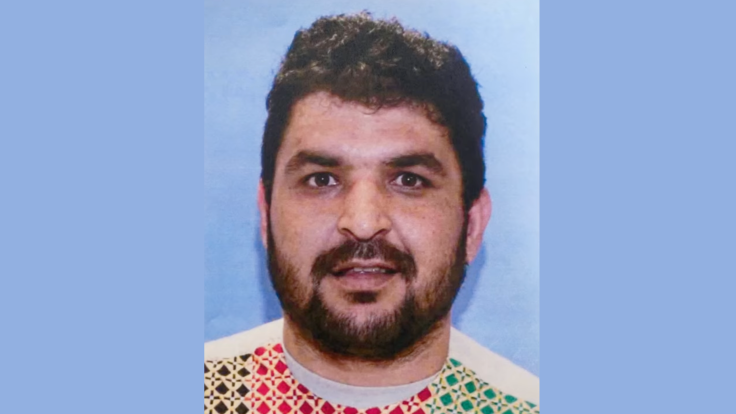New Witness Footage of Rahmanullah Lakanwal's Ambush Released; Netizens React
Disturbing footage showing Rahmanullah Lakanwal exchanging fire with National Guard troops circulates on X.

The release of new footage from a shocking ambush near the White House has intensified public debate over the incident, showing a lone gunman exchanging fire with at least two National Guardsmen. The attack, which occurred on Wednesday, 26 November, was carried out by an Afghan national who entered the US in 2021.
The grainy video has done little to quell public speculation, instead fuelling conspiracy theories about a government cover-up and raising questions about the lack of high-quality surveillance footage. The incident has also had immediate geopolitical consequences, with President Donald Trump freezing all immigration requests from Afghanistan, leaving thousands of refugees in limbo.
The Ambush Footage
A clip of the attack was shared on X (formerly Twitter) by the account AZ Intel, which noted the footage originated from The Wall Street Journal.
It shows a man, who was earlier identified as Afghan national Rahmanullah Lakanwal, in a black outfit, holding a handgun and exchanging fire with at least two military personnel outside a building. Gunfire can be heard in the footage amid the chaotic scene.
The witness who took the video appeared to be inside a moving vehicle.
WATCH: WSJ releases witness footage of Wednesday's attack on National Guard members near White House in Washington, D.C..
— AZ Intel (@AZ_Intel_) November 27, 2025
Footage shows a man, identified as Afghan national Rahmanullah Lakanwal, holding a revolver and a National Guard member returning fire.
Two National Guard… pic.twitter.com/rdZDorJvos
Online Scepticism and Conspiracy Theories
On social media, the footage was met with widespread scepticism, with many users questioning the official narrative.
One user speculated that it was an inside job by the administration, and the clip was used to its advantage. The X user likened the incident to Charlie Kirk's assassination.
'All inside jobs to those not stuck in left verse right matrix,' @BIGGUYRy83 wrote.
Another said that the clip was 'an edited video', so they were not sure if it was real. 'These days, if it's edited assume it's fake,' @yourowncook commented.
Meanwhile, many also wondered why media outlets have not released official footage of the shooting, considering that it happened near the White House. They assumed there were many security cameras in the area, so they questioned why they only saw this grainy footage from a witness.
'So you're telling me, in DC, one of the most security camera'd cities in the world, the only video of the shooting we can attain is a blurry, jerky cell phone video from a bystander driving by?' one asked. 'At this point ALL the videos shown thus far are from bystanders. Why is that?'
Another user shared the same sentiment, saying, 'why we have not seen a single CCTV frame from one of the most heavily surveilled zones in the entire country.' According to the X user, the ambush happened just two blocks away from the White House, and the area has many cameras, but there are no still images or a timeline.
They also wondered why the incident was declared a 'federal attack' and was blamed on 'a group of people within minutes' despite not showing the public basic evidence supporting its claim.
'If this incident is as straightforward as they claim, the footage would already be out. The absence of video in a place saturated with surveillance is not normal,' they added.
A better question is why we have not seen a single CCTV frame from one of the most heavily surveilled zones in the entire country. This happened two blocks from the White House. That area has federal, municipal, Secret Service, private-sector, and traffic cameras. Yet somehow the…
— The Source (@TheSource25) November 28, 2025
Trump Freezes Afghan Immigration
Rahmanullah Lakanwal, who was reportedly the man responsible for the shooting, is an Afghan national who entered the United States in 2021 under the Biden administration. He arrived as part of the chaotic evacuation following the US withdrawal from Afghanistan and the subsequent Taliban takeover. The incident prompted President Trump to freeze all immigration requests from individuals hailing from Afghanistan due to security reasons.
Afghans in Pakistan Face Renewed Uncertainty
Mr Trump's decision leaves thousands of Afghan refugees in limbo, especially those who fled from Afghanistan and are currently in Pakistan waiting for their US visas to be approved. They left their home country to escape the Taliban.
According to Ahmad Samim Naimi, an advocate for Afghan refugees in Islamabad, Afghan nationals with proper visas and United Nations High Commissioner for Refugees (UNHCR) papers are also not safe in Pakistan. He stated that they are blocked at checkpoints, forcibly removed from their homes, and pressured to pay bribes. Mr Naimi said he is hopeful that the US will reconsider its decision.
© Copyright IBTimes 2025. All rights reserved.




















